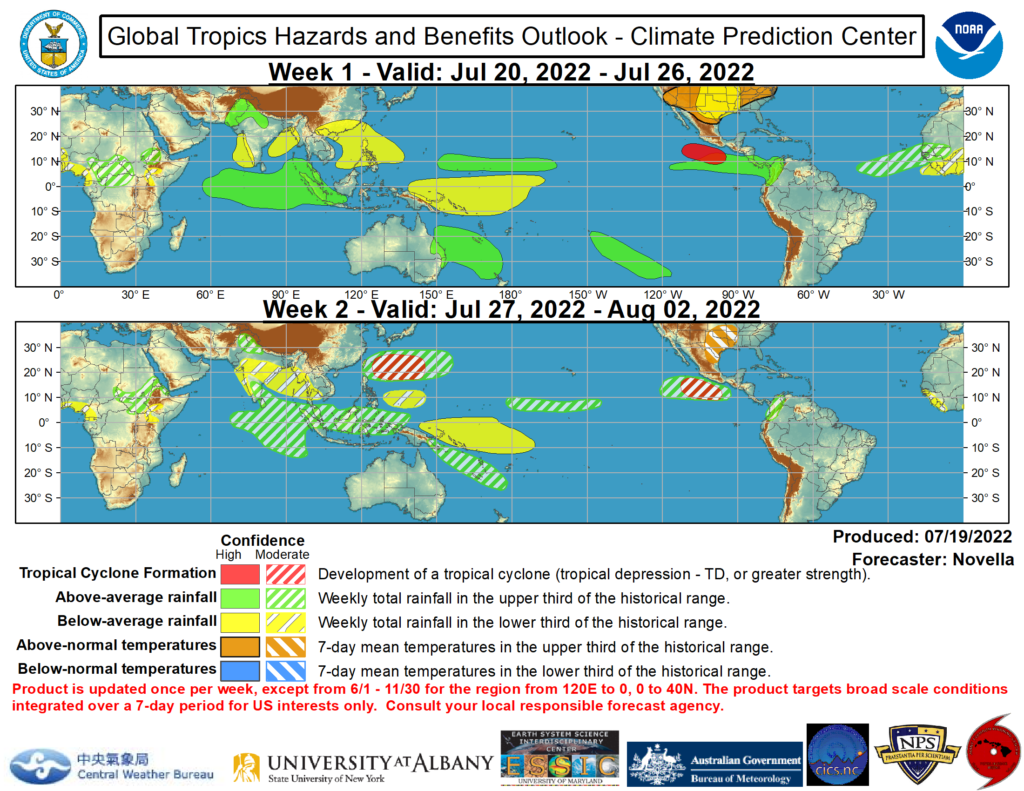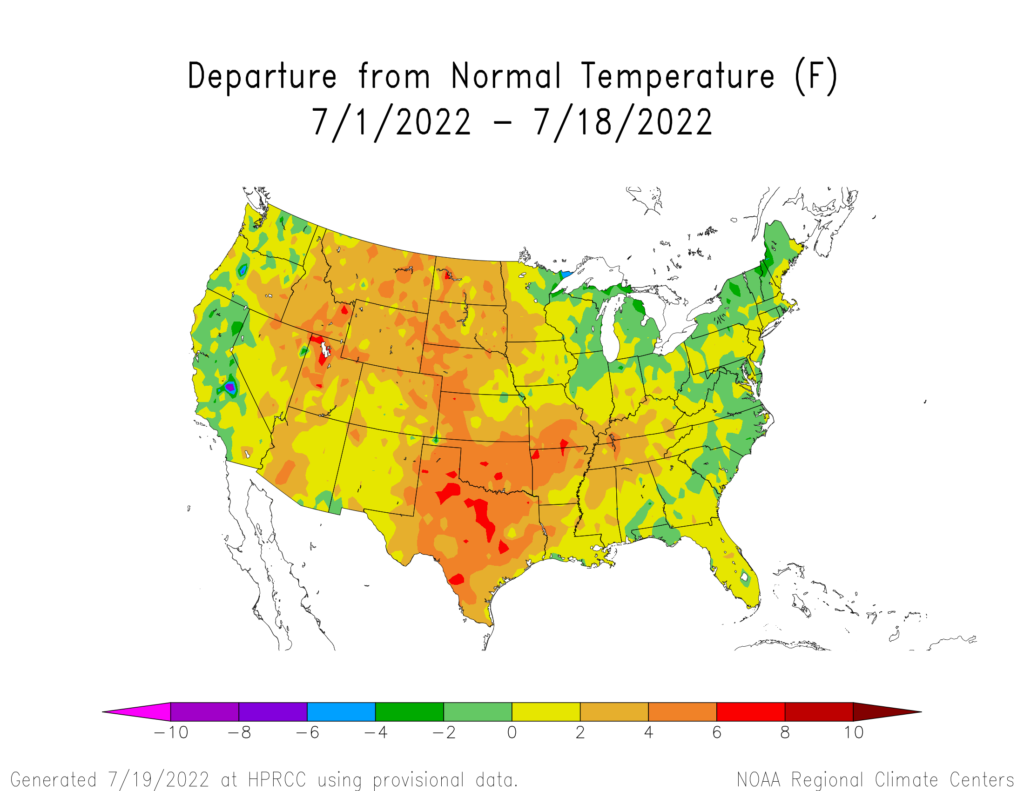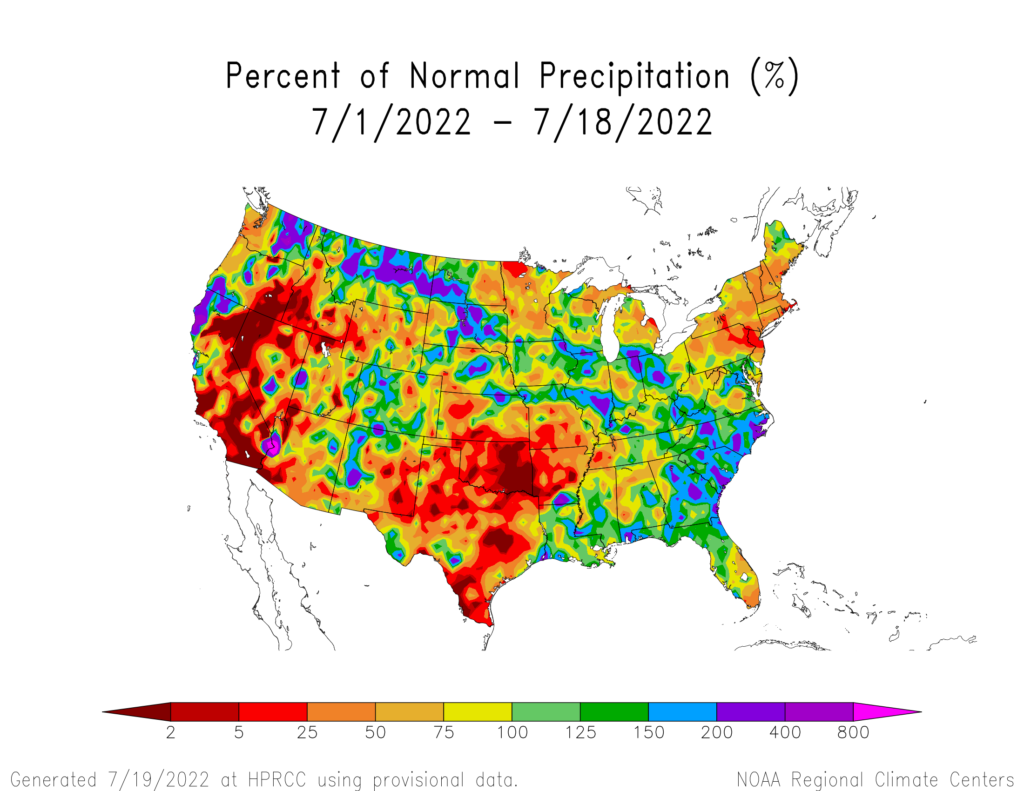Here is what we are paying attention to this evening and the next 48 hours from this evening’s NWS Forecast.
...Dangerous heat to continue impacting much of the central and northeastern United States... ...Severe thunderstorms possible across the Ohio Valley this evening before shifting into New England and parts of the Southeast on Thursday... ...Persistent monsoonal moisture to bring locally heavy rains and isolated flash flooding across portions of the Southwest into the southern Rockies...
Continuation of the NWS Short Range Forecast (It is updated twice a day and these updates can be found here.
Heat continues to be the major weather story heading into the latter half of the week, with over 100 million citizens currently located within Excessive Heat Warnings and Heat Advisories. Even though it is mid-July and during the climatological peak of summer for most locations, well above average temperatures are making conditions even more likely to cause heat related illnesses. A strong upper-level ridge that has dominated the weather pattern over the last several days continues to remain situated over Southwest and is forecast to stretch eastward by Friday. Widespread high temperatures in the mid-to-upper 90s and low 100s will encompass a majority of the country on Thursday and Friday. Relatively cooler weather is expected to be confined to the immediate West Coast and Great Lakes, where highs should reach into the 70s and 80s. Areas most are risk for dangerous heat will be located across the Southwest, Great Basin, central and south-central U.S., coastal Mid-Atlantic, and Northeast. Highs in these locations will near or exceed 100 degrees, with humidity east of the Rockies making it potentially feel closer to 110 degrees during the late afternoon hours. Low temperatures will also remain quite warm and only drop into the upper 70s and low 80s, possibly breaking dozens of daily warm minimum temperature records on Thursday morning. The scorching heat during the day combined with warm overnight temperatures can make conditions particularly dangerous for anyone spending extended time outdoors or without air conditioning. Residents within an Excessive Heat Warning or Heat Advisory are advised to follow proper heat safety and check in on anyone who may be more vulnerable to heat related illnesses. A cold front traversing the lower Great Lakes tonight will spark scattered thunderstorms across the Ohio Valley and into the central/southern Appalachians. Some storms may turn severe, producing damaging wind gusts, large hail, and isolated tornadoes from southeast Michigan to Kentucky. There is also the potential for thunderstorms to contain intense rainfall rates and repeat over parts of eastern Kentucky and adjacent areas. A Slight Risk (level 2/4) of excessive rainfall is in effect for this area through early Thursday morning. As the cold front progresses eastward on Thursday, the severe weather threat is anticipated to shift toward New England and farther southward into the Southeast. Damaging wind gusts and isolated hail should remain the primary hazard, with isolated tornadoes also possible across New England. A Slight Risk (level 2/5) of severe weather has been issued for Thursday across New England, as well as an area extending from central North Carolina to central Mississippi. Additionally, heavy rainfall within these thunderstorms could lead to a localized flash flood threat. Elsewhere, monsoon season is expected to continue across the Southwest and into parts of the central Great Basin/Rockies. Isolated thunderstorms forming during the afternoon and persisting into the evening will continue to be a daily occurrence, but overall areal coverage to shrink a bit into Thursday and Friday. Showers and thunderstorms are most likely to impact Arizona, New Mexico, and Colorado during this timeframe. Areas near recent burn scars, slot canyons, and saturated vegetation are most at risk to localized flash flooding.
Maps that relate the forecast to geography can be found by clicking Here for Day 1 and Here for Day 2.
Here is a 60-hour animated forecast map that shows how the short-term forecast is expected to play out.
If it needs to be updated click here.
HAZARDS OUTLOOKS
Click here for the latest complete Day 3 -7 Hazards forecast which updates only on weekdays. Once a week probably Monday or Tuesday I will update the images. I provided the link for reads to get daily updates on weekdays. Use your own judgment to decide if you need to update these images.
Worldwide Tropical Forecast
(This graphic updates on Tuesdays) If it has not been updated, you can get the update by clicking here
Detailed Maps and Reports for the Western Atlantic and the Pacific Oceans
Below are three maps that summarize the situation for the Atlantic, Eastern and Central Pacific. Additional information can be accessed by clicking HERE
First the Atlantic
Click to view the forecast map and have access to additional information https://www.nhc.noaa.gov/gtwo.php?basin=atlc&fdays=5
Then Eastern Pacific
Click to view the forecast map and have access to additional information https://www.nhc.noaa.gov/gtwo.php?basin=epac&fdays=5
Then Central Pacific
Click to view the forecast map and have access to additional information https://www.nhc.noaa.gov/gtwo.php?basin=cpac&fdays=5
And the Western Pacific
Click to view the forecast map and have access to additional information https://www.metoc.navy.mil/jtwc/jtwc.html
Some Intermediate-Term Outlooks
Links to “Outlook” maps and discussions for three time periods. Days 6 – 10, Days 8 – 14, and Weeks 3 and 4. An outlook differs from a forecast based on how NOAA uses these terms in that an “outlook” presents information from deviation from normal and the likelihood of these deviations.
You have to click on the links because they do not update automatically and I do not want to have stale images in the article. But it is not difficult to click on a link and you get a large image plus a discussion. On Fridays in a separate article, we will show the images and provide a link in this article that article. But remember what you will see is the images as of Friday. But here you can get the current images simply by clicking on them. Then hit the return arrow at the upper left of your screen to return to the article. You will not find this information easily anywhere else.
Right now you can find these maps here (We show them every Friday there but you can click above and find them).
Month to Date Information
(These images do not auto-update – I update them from time to time, but the links are there just click on them)
Temperature
Precipitation
Month to date Temperature can be found at https://hprcc.unl.edu/products/maps/acis/MonthTDeptUS.png
Month to date Precipitation can be found at https://hprcc.unl.e du/products/maps/acis/MonthPNormUS.png







